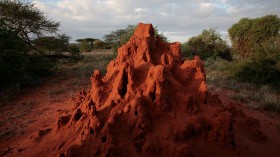For the past 25 years, scientists have been trying to identify the source of a natural chemical that has shown promise in early studies as a cancer treatment. The elusive anti-cancer compound is now reported to be produced by the accessible soft coral, according to researchers at the University of Utah Health.
Soft Corals and the DNA Code
Soft corals are malleable corals that look like aquatic plants.
The DNA code for the animal's ability to synthesize the chemical was later found by the researchers after they had established the source. The DNA code for the animal's ability to synthesize the chemical was later found by the researchers after they had established the source.
Eric Schmidt, Ph.D., professor of medicinal chemistry at the University of Utah Health, says that the team has never been able to do this with a drug lead on Earth before. Together with postdoctoral researcher and first author Paul Scesa and assistant research professor Zhenjian Lin, Schmidt oversaw the study.
The discovery makes it possible to produce the compound in sufficient quantities for thorough testing, which could eventually lead to the development of new anti-cancer compounds.
Independent evidence that corals produce related molecules was provided by a second research team under the direction of Bradley Moore, Ph.D., from Scripps Institution of Oceanography at the University of California, San Diego.
Medicinal Properties
Numerous drug-like substances found in soft corals can be used as anti-inflammatory drugs, antibiotics, and other types of medications. The biggest challenge to converting these compounds into clinically effective medicines, though, has been finding enough of them. Schmidt claims that this new approach should now make these other compounds available.
Animals other than corals also contain potential therapeutics. According to Schmidt, the natural world is full of spiders, snakes, and other creatures that are known to carry chemicals with therapeutic properties. However, the substances found in soft corals have distinct benefits for the creation of new medicines.
Corals use their chemicals to fend off predators that try to eat them, as opposed to venomous chemicals that are injected into prey. The chemicals found in soft corals are easily absorbed because they were designed to be consumed. Similar to this, medications made from these kinds of compounds ought to be ingested as pills with water rather than through injection or another more invasive method.
Schmidt emphasizes that although it is more difficult to locate these compounds, it is simpler to make them in a laboratory and administer them as medications.
For decades, these options had seemed just out of reach. It took the right knowledge and a little luck to get to this point.
Finding the Source
A common species of soft coral living off the coast of Florida is where Scesa discovered the long-sought compound. A rare coral found close to Australia in the 1990s was found to contain the chemical eleutherobin, which has anti-cancer properties. Soft corals use the cytoskeleton, a crucial cell scaffold, as a line of defense against predators, but the chemical disrupts it. However, research in the lab revealed that the substance was also a strong inhibitor of cancer cell growth.
Read also: Could Ketogenic Diet Help Fight Pancreatic Cancer? New Study Says it is Possible
Genetic Code
The next step of the study was to determine whether the genetic code of the coral contained instructions for producing the substance. Recent developments in DNA technology have made it possible to quickly reconstruct any species' genetic code. The problem was that the scientists were unsure of how the chemical's manufacturing instructions should be laid out.
Schmidt said that searching for an answer when you don't know the question is like going into the dark, SciTech Daily reports.
They solved the issue by identifying coral DNA regions that resembled the genetic code for substances of a similar nature in other species. The first steps of creating potential cancer therapeutic could be replicated by microorganisms after coral DNA instructions specific to soft coral were programmed into bacteria grown in a lab.
This demonstrated that eleutherobin originates from soft corals. Additionally, it proved that creating the compound in a lab should be possible. Their current work focuses on completing the compound's recipe's missing steps and figuring out the best way to manufacture large quantities of the potential drug.
Related article: Highly Contagious Blood Cancer Detected in Clams Threaten Marine Ecology
© 2024 NatureWorldNews.com All rights reserved. Do not reproduce without permission.





